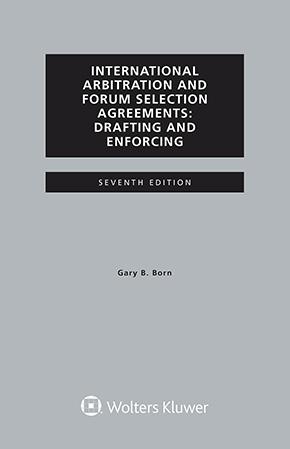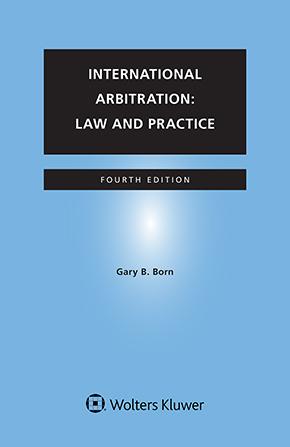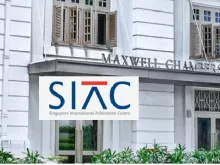2025 Australian Arbitration Week Recap: Mass Claims in Motion: Class Actions in International Arbitration
October 18, 2025
The emerging field of mass claims in arbitration continues to evolve and faces a number of procedural challenges. This is unlike class actions in litigation, where many such issues are now largely settled. These challenges were the focus of discussion at Mass Claims in Motion: Class Actions in International Arbitration, a session hosted by global law firm Clifford Chance during the Australian Arbitration Week on 15 October 2025. The session demonstrated that the ability to effectively manage such challenges in arbitration will determine its viability as a forum for mass claims.
During this session, the panel considered recent high-profile cases, including Argentina's experience with mass claims under investment treaties, bondholders' actions against Switzerland, and a mass claim brought against Cyprus under bilateral investment treaties with Greece and Luxembourg. The panel focused on the challenges and the future of class actions in arbitration, particularly in investment arbitration as more information on these cases is publicly available.
The panel was moderated by Clifford Chance partner, Kate Apostolova, and comprised:
- Brad Woodhouse (Partner, Head of Class Actions, Clifford Chance);
- Erika Williams (Independent Arbitrator, Williams Arbitration);
- Dr Callista Harris (Barrister, 7 Wentworth Chambers);
- Robert Kirkness (Barrister, Thorndon Chambers); and
- Zoe Lim (Senior Associate, Mori Hamada).
Definition of "Mass" Arbitration
There is no set definition for class actions in international arbitration, and no threshold number to qualify as a "mass" arbitration. "Mass" arbitration will typically involve multiple, otherwise unrelated claimants who bring similar claims in a single proceeding. In this way, class action arbitrations differ from standard multi-party arbitrations where claimants are usually connected through related contracts, joint ventures, or corporate structures.
A class action involves one person or entity that acts as a representative of a large and sometimes undefined group of individuals who have similar or related claims against the same respondent(s). By contrast, a "mass" arbitration involves a large number of claimants with similar or related claims against the same respondent(s) which are consolidated into one common proceeding (for more information, see here).
Key Challenges
Key challenges affecting mass claims in arbitration considered by the panel included jurisdiction and admissibility, and due process and fairness. Some of these challenges stem from the different underpinnings of class action litigation and arbitration. Litigation is driven by access to justice whereas arbitration is an inherently private dispute resolution process, and the procedural framework for class action litigation is well established compared to that of arbitration.
Jurisdiction and Admissibility
Regarding whether there are any "gatekeeping" steps in arbitration for mass claims, the panel noted that the American Arbitration Association (“AAA”) and JAMS have threshold rules to commence arbitration for mass claims. The AAA's “Mass Arbitration Supplementary Rules” apply whenever 25 or more similar demands for arbitration are filed, whether or not such cases are filed simultaneously. In contrast, the JAMS' “Mass Arbitration Procedures and Guidelines” apply where a minimum of 75 similar demands for arbitration, or another number as specified in the parties’ agreement(s), are filed against the same party or related parties by individual claimants represented by either the same law firm or law firms acting in coordination.
The panel, however, observed that most major international institutions in the Asia Pacific have not developed clear frameworks or guidance regarding whether class action claims can be brought in arbitration.
In terms of lessons from mass claims in investment arbitration, the panel discussed three Argentinian investment arbitration cases, including Abaclat and Others v Argentine Republic, ICSID Case No. ARB/07/5 ("Abaclat").
With respect to jurisdiction, it is uncontroversial that you can have ICSID claims or one set of ICSID proceedings brought by multiple claimants, and that the only real jurisdictional hurdle in these cases is that the jurisdictional requirements for each individual claimant are met.
In the more recent case of Theodoros Adamakopoulos and others v. Republic of Cyprus (ICSID Case No. ARB/15/49) ("Adamakopoulous"), the tribunal found that, with respect to jurisdiction, there had to be a unitary dispute, that is, the same dispute affecting the various claimants. While this poses a hurdle to overcome, the characterisation of a dispute is subjective, and therefore it is a flexible test.
As to admissibility, the tribunal considered the relevant question to be whether the proceedings could be managed within the ICSID framework. That is, can the proceedings be conducted in such a way that the procedural rights provided for in that framework are still respected? For example, can the respondent defend itself in relation to each claim in the same way as it could in relation to an individual claim?
Due Process and Fairness
With respect to ensuring each party's right to be heard, the panel observed that it would be practically difficult to do so in mass claims in arbitration. Again, the AAA and JAMS are leading the charge as they have requirements in their rules to notify class members and give them the chance to opt in or opt out.
Arbitrators could also design bespoke procedures to allow input from class members. Issues to consider include how an arbitrator is going to enable submissions from absent members who opt in. Can they appoint class representatives or a liaison council for class members? By way of example, in the case of Abaclat, the tribunal established an entire new set of procedural rules for the proceedings, whereas in Adamakopoulous, the tribunal held that this could not be done under the ICSID regime as it is beyond what is contemplated in Article 44 of the ICSID Convention and Rule 19 of the ICSID Arbitration Rules.
Managing Complexity
When discussing practical steps for managing complexity in mass claims in arbitration, the panel considered the roles of the arbitrators, the claimants' counsel, and the respondent's counsel.
Arbitrators
The panel considered the techniques adopted by arbitral tribunals for managing complexity. For example, in Adamakopoulous, the tribunal bifurcated the proceedings between liability and quantum. This was so that it could resolve the unitary dispute during the liability phase without addressing the situation of each individual claimant as would be required during the quantum phase. However, whether such an approach would work in other cases will ultimately depend upon the nature of the claims.
With respect to the role of institutions, the panel agreed that institutional rules reduce the uncertainty of ad hoc proceedings and reassure parties that there is a built-in process available. Institutions are also well placed to manage notice logistics, class lists and communication portals, and such administrative support would avoid overburdening the tribunal with administrative tasks.
On the other hand, tribunals can develop case-specific, bespoke processes using their judgment and can tailor evidentiary rules to the class context. This approach provides the flexibility for which arbitration is valued.
Claimants’ Counsel
The panel added that it is imperative for the claimants' counsel to be extremely organised in light of the number of claimants in mass claims. One example is ensuring that consistent workflow processes regarding the treatment of claimants are in place, including for how the claimants' information is processed.
In addition, the panel noted that a benefit of having a litigation funder is that they often bring expertise on how to manage administrative complexities, such as formalising the taking of instructions, resolving disputes over the course of the proceeding in respect of decision making and managing the distribution of any proceeds.
Respondent's Counsel
The general strategy is for the respondent to raise as many objections as possible. In the ISDS context, these objections can be classed as follows: in the realm of jurisdiction, (1) that there is no consent to arbitrate mass claims, generally focusing on the wording of the standing offer to arbitrate, and (2) there is no unitary dispute; and in respect of admissibility, that the form of proceeding is not manageable, and cannot be carried out consistently with the respondent's procedural rights under the relevant rules.
Ultimately, the underlying concern of the arbitral tribunal is to balance efficiency with fairness, even though decisions are framed in terms of legal issues of jurisdiction and admissibility.
Enforcement and Settlement
The panel identified that enforcement of arbitral awards in the ISDS context is untested. Even though there have been a few decisions, the proceedings were settled before the receipt of an award on the merits.
It can, however, be assumed that if the claimants have been sufficiently coordinated to obtain an award on merits, they will also be coordinated with respect to the enforcement of that award. It can also be expected that a respondent State will challenge the enforcement of an award, on grounds including lack of consent or jurisdiction or on the basis of due process issues.
With respect to whether aggregation of claims encourages settlement in arbitration, the panel considered that it depends on the circumstances of each case, including the appetite of the respective parties. Comparatively, in court proceedings where class actions are bifurcated between liability and quantum, the need to run a large number of cases during the quantum phase is a strong motivator for the claimants to seek to resolve the claims by way of settlement.
Conclusion and Key Takeaways
In light of the limited number of "mass" arbitrations that have taken place and it being a relatively new development, it remains to be seen what steps arbitral institutions, arbitrators, parties and counsel will take to address these challenges, and in particular, whether other arbitral institutions will follow suit with the initiatives taken by the AAA and JAMS.
The fundamentally different and inconsistent philosophical underpinnings of litigation and arbitration make it difficult to reconcile a hybrid model between class actions and private arbitration. Since the introduction of Australia’s federal class actions regime in 1992, there have been a series of appeals, both intermediate and to the High Court of Australia, that have decided and provided guidance on very significant issues of procedure. Comparatively, the inherent uncertainty which exists with respect to the procedures regarding mass claims in arbitration creates real challenges in the implementation of a class actions regime in arbitration. The panel considered that it could be useful to adopt the representative action logic from class action litigation in arbitration. That is, where there are thousands of different individual claimants, the court can look at a small number of claimants who reflect certain characteristics that allow the common issues to be determined. Using this framework would give arbitrators more confidence that they can effectively manage mass claims in arbitration. This concept of “batching” claims was previously discussed in this blogpost.
While some elements of class action litigation could be adopted in "mass arbitration", as suggested by the panel, ultimately, they are separate processes and the features specific to arbitration need to be taken into account in developing any procedural frameworks for dealing with "mass" claims.
More coverage from the Australian Arbitration Week is available here.
You may also like











